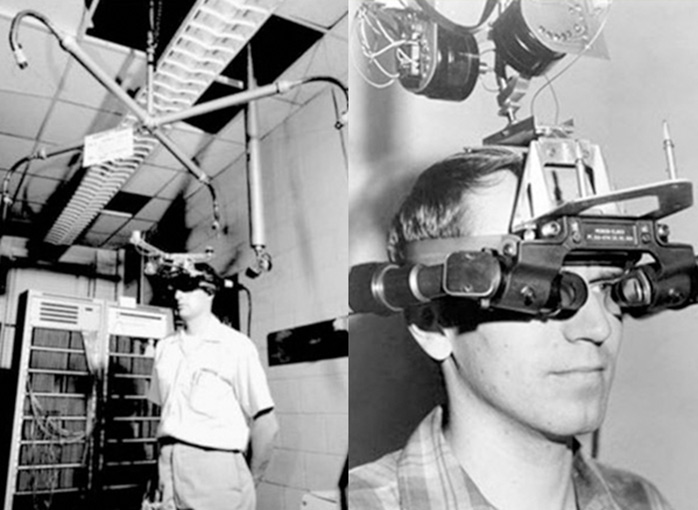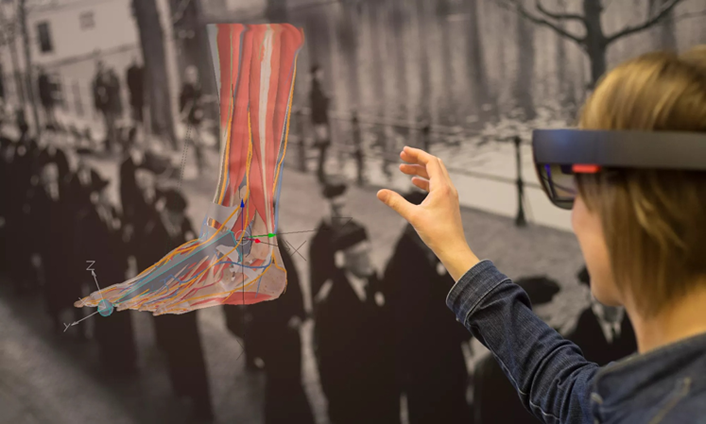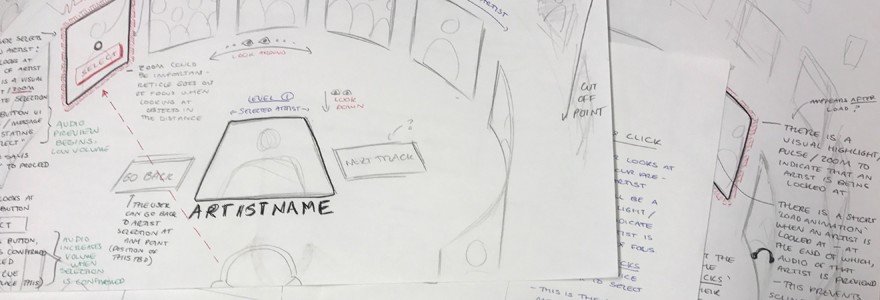Virtual Reality as we know it stems from work carried out in the 60s. Dubbed ‘The Sword of Damocles’, Ivan Sutherland’s creation was the first motion tracking Head-Mounted Display, or HMD for short.
The creation of a ‘Virtual Reality’, or placing the viewer into a different reality however, goes back a bit further than that, with stereoscopic photos and paintings created as far back as 1830. We have since seen plenty of applications for the use of VR, we dive deeper into its history and some great current examples in one of our next Tech Focus blogs. In this blog, we will focus on VR and how its been applied to businesses.

VR within a business context
Current adoption of VR within businesses can differ, while it can be a great addition to marketing activities, it might not always make sense to do so. We’ve seen multiple ways in which VR has been adopted from employee training to sales.
There are a plethora of VR training simulators in use at the moment across a wide range of industries. The medical industry already has a number of companies operating that offer VR training simulations. Some of them champion the total immersiveness one feels in VR, and speak about ‘stress inoculation’, or practicing stressful procedures and situations to the point that you become accustomed to it.
This is one example of how powerful VR systems can be for providing a safe and emotive learning experience, without the hassle of setting up a real environment. Medical education is starting to add VR Training to its curriculum, such is the benefit that can be acquired.
 University of Leiden and the Leiden UMC and the Microsoft HoloLens. Source
University of Leiden and the Leiden UMC and the Microsoft HoloLens. Source
Toyota, Audi and Pagani have all launched VR experiences to aid with their sales. The gist of all these experiences is to enable prospective buyers to view different paint jobs, custom options and what the car looks like during different times of day or night.
Given that most showrooms have limited room, this allows the dealerships to show off the entire possibilities of a car’s customisation, give the customer a immersive and engaging experience, and hopefully provide a personalised car relevant to the customers needs. Instead of flicking through a catalogue, customers are given the power to customise and preview various permutations of the car they want. The power of choice when purchasing something is important, whether or not it is limited or unlimited.
If presented in the right way, a VR experience can create or reinforce the bond between customer and brand, via a powerful immersive and emotional experience.
Using VR, Audi is able to show off the customisation options for the entirety of their car range — over 70 vehicles. By using VR, they make their brand much more accessible and enhances the buying experience. It leaves a vivid and memorable buying experience that will affect the choices the consumer is likely to make in future. We also believe this can also be applied to real estate for people to get a real feel of a property they are purchasing which is under development. If presented in the right way, a VR experience can create or reinforce the bond between customer and brand, via a powerful immersive and emotional experience.
So with that little intro in mind — what have we, TheTin, done in this realm of VR cars, sci-fi shoot-em-ups and medical emergency training? We approached this from a user standpoint — what could VR do that would improve a users brand experience? What problem can be solved with VR? We started with looking at our own user experiences and working from there. We’re all music lovers here at TheTin, constantly changing what’s playing on our music system. When navigating around the Spotify app, we realised that there was an opportunity to create an immersive VR experience utilising the app, to make a better version of it’s 2D counterpart.
We designed Band Explorer VR as a browser based VR experience that allows music fans to explore and discover new music in a Virtual Reality space. You can see how we designed and built it in our blog here.

We presented this project at SXSW 2017 in collaboration with The Department of International Trade, but there’s a whole load more we could introduce to the band explorer from Spotify in its current state. The genius lyric system could scroll past as you browse your catalogue, running simultaneously alongside the video and ticket and merchandise options. That could offer the music lover a full-spectrum view of your favourite artists and playlists all around you — from the comfort of your living room using just your smartphone.
We’re excited with what VR has brought us, and we’ve dived in and been part of its development over the past decade. It has its pros and cons, but we’re confident that Virtual Reality and its counterparts, Augmented Reality and Mixed Reality are going to be present in a major part of our day to day lives sooner rather than later, and we know how to make the most of it.
Stay tuned for our upcoming blogs on VR, where we dive deeper into its history and current trends, as well as where we think VR will take us in the future.
As your brand and technology partner, we’ll help you discover what’s possible.
We’ll make sure that the way we work is the right fit for your business, and we’ll ask the right questions to make sure you’re set up for success.
We can help build your brand through technology, email [email protected]